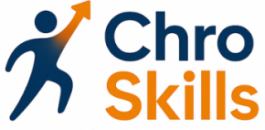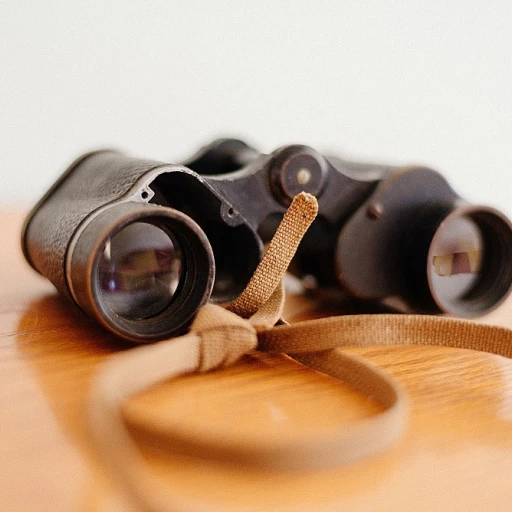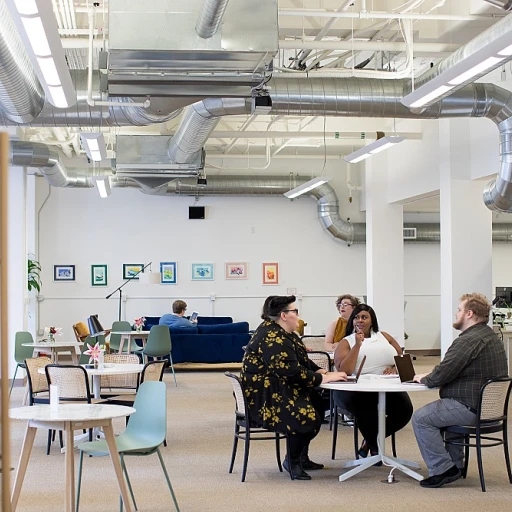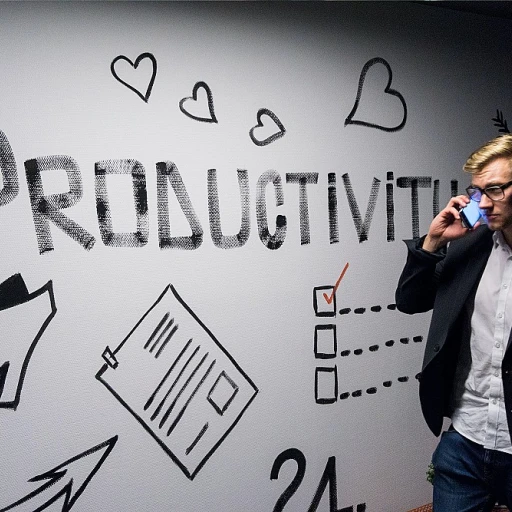
Understanding Collaborative Teaming
Defining the Building Blocks of Collaborative Teaming
Collaborative teaming can transform the way organizations work, empowering teams to achieve goals that are greater than the sum of their parts. It involves a strategic and intentional approach to bring together diverse team members who possess varied skills and knowledge bases. In such teams, collaboration becomes the heartbeat of project management and organizational success. The essence of collaborative teaming lies in setting a common goal, a shared vision that all team members strive toward. This transforms individual efforts into coordinated action, creating an environment where functional collaboration is the norm. Establishing a single source of truth ensures that all participants have access to the same information, enhancing team effectiveness and minimizing confusion. Effective communication and trust are cornerstones in this dynamic. Team members are encouraged to engage in open dialogue, fostering a culture of knowledge sharing and learning. Effective use of collaboration tools and techniques further aids this process, ensuring real-time communication and interaction. Implementing collaborative teaming with cross-functional teams requires strong leadership. Leaders need to cultivate an environment where problem-solving is a shared responsibility and diverse perspectives are valued and leveraged. Leveraging these diverse skills and backgrounds not only enriches the decision-making process but also enhances the collective capability of the team. For organizations looking to improve employee well-being and team collaboration, understanding the nuances of collaborative teaming is vital. You might explore enhancing employee well-being essential skills for CHROs to see how key HR skills intersect with effective team dynamics.Key Skills for Effective Collaborative Teaming
Essential Collaborative Skills for Team Success
Effective team collaboration is the backbone of any successful organization, especially in today's dynamic work environments where cross-functional collaboration is key. To harness the full potential of a collaborative team, members must cultivate a range of skills that foster seamless communication, trust, and problem-solving.- Communication Proficiency: Communicating effectively is crucial for any team. It involves active listening, clear articulation of ideas, and the ability to provide constructive feedback. Efficient communication ensures that all team members are on the same page, promoting a single source of truth and reducing misunderstandings.
- Trust Building: Establishing trust within the team is essential for collaborative success. When team members trust each other, they're more willing to share knowledge and ideas, leading to a richer pool of resources to draw from. Trust fosters an environment where team members can voice opinions without fear of judgment.
- Problem-Solving and Conflict Resolution: As highlighted in the article on innovative strategies for evaluating learning outcomes, addressing conflicts and solving problems collaboratively are vital skills. It ensures that issues are resolved efficiently, allowing the team to focus more on achieving their common goals.
- Leadership and Team Support: Effective leaders guide and support teams by setting a shared vision and encouraging a culture of continuous learning and improvement. Good leadership also involves leveraging the diverse skills and perspectives of each team member to enhance overall team effectiveness.
- Time and Project Management: Managing time effectively ensures that team projects remain on schedule and meet deadlines. Project management skills encompass organizing work to maximize efficiency and minimize delays, facilitating smoother cross-functional collaboration.
Building Trust and Communication
Fostering a Culture of Trust and Open Communication
In any collaborative environment, building a foundation of trust and effective communication is essential. Teams thrive when members trust one another, creating a safe space for sharing knowledge and ideas without fear of judgment or reproach. Establishing this trust requires a combination of honesty, transparency, and consistency in interactions among team members. Open communication plays a critical role in successful collaboration. Ensuring that lines of communication are open helps facilitate cross-functional collaboration and fosters a culture of mutual respect. Utilizing tools that support real-time communication can enhance team collaboration, enabling seamless exchanges and the sharing of valuable insights among team members. Effective communication also entails active listening—an often underrated skill that ensures every voice is heard and valued within the team. When team members synthesize different perspectives garnered from open communication, they are more likely to come up with innovative solutions. To cultivate trust and reinforce communication, consider these strategies:- Establishing a single source of truth to maintain consistency and clarity in project information.
- Encouraging regular check-ins to ensure everyone is aligned and any concerns are promptly addressed.
- Promoting a shared vision and common goal to unify team efforts and ensure collective progress.
- Utilizing project management tools to streamline processes and enhance knowledge sharing, which in turn bolsters team effectiveness.
Conflict Resolution and Problem-Solving
Fostering Resilience through Effective Conflict Resolution and Problem-Solving
In any team setting, conflict is inevitable. When handled effectively, it can lead to stronger collaboration and innovation within the team. Conflict resolution and problem-solving are integral to nurturing team collaboration and achieving a shared vision. One critical element is creating an environment where team members feel comfortable expressing differing opinions without fear of retaliation. This can be achieved through leadership practices that encourage open communication and actively promote a culture of trust and mutual respect. To cultivate these skills within a collaborative team, consider the following best practices:- Encourage Open Dialogue: Foster an atmosphere where team members feel safe to share their thoughts. This supports a single source of truth and allows for diverse perspectives to enrich the knowledge base of the team.
- Implement Structured Approaches: Use proven problem-solving frameworks to address issues methodically. This often involves identifying the root cause of a problem and exploring multiple solutions before deciding on the best course of action.
- Promote a Culture of Sharing Knowledge: Leverage cross-functional collaboration to bring different insights to the table. Encouraging team members to engage in knowledge sharing enhances the team's collective wisdom and problem-solving capacity.
- Utilize Project Management Tools: These tools can streamline communication and provide a real-time overview of team effectiveness. By ensuring time management and task assignments are clear, project management tools can help keep teams aligned and focused on the common goal.
Leveraging Diversity and Inclusion
Embracing Diversity for Enhanced Team Collaboration
In today's dynamic work environment, leveraging diversity and inclusion is not just a buzzword but a critical component of effective team collaboration. Diverse teams bring a wealth of perspectives, experiences, and skills that can significantly enhance problem-solving and innovation. By fostering an inclusive culture, organizations can ensure that all team members feel valued and empowered to contribute their unique insights.
To truly harness the power of diversity, it's essential to create a culture where knowledge sharing is encouraged and where every team member feels their voice is heard. This involves implementing tools and practices that facilitate open communication and real-time feedback. A single source of truth, where information is accessible to all, can help in aligning team members towards a common goal.
Building an Inclusive Knowledge Base
Cross-functional collaboration is another key aspect of leveraging diversity. By encouraging team members from different departments to work together, organizations can break down silos and promote a more holistic approach to project management. This not only enhances team effectiveness but also fosters a culture of continuous learning and growth.
Leadership plays a crucial role in this process. Leaders must be proactive in promoting diversity and inclusion initiatives and in providing opportunities for employees to engage in cross-functional projects. By doing so, they can create an environment where collaboration skills are honed, and team dynamics are strengthened.
Ultimately, the goal is to create a collaborative team environment where diversity is not just tolerated but celebrated. This requires a commitment to ongoing education and the implementation of best practices that support functional collaboration. By prioritizing diversity and inclusion, organizations can enhance their team's ability to innovate, adapt, and succeed in an ever-changing landscape.
Measuring Success in Collaborative Teaming
Indicators of Successful Team Collaboration
Successful collaborative teaming in any organization requires careful evaluation of various elements to ensure continuous improvement and effectiveness. By focusing on specific metrics, teams can better understand the dynamics at play and make informed adjustments to enhance functionality.
- Team Communication: Monitor the clarity and efficiency of communication among team members. Open channels and real-time updates can lead to a better flow of information and a more cohesive project output.
- Trust Levels: Gauge the trust between team members through surveys and feedback forms. Trust is foundational to strategic collaboration and effective problem-solving within teams.
- Collaboration Tools Usage: Evaluate how effectively employees are utilizing collaborative tools and technologies. Regular training sessions can ensure everyone is leveraging these tools to their full potential, contributing to a robust knowledge base.
- Diversity and Inclusion: Assess the level of inclusivity within the team. A diverse team that embraces various perspectives often drives innovation and strengthens cross-functional collaboration.
- Problem-Solving Efficiency: Measure how efficiently the team resolves conflicts and challenges. Effective conflict resolution reflects a strong understanding of collaborative teaming principles.
- Achievement of Common Goals: Regularly review the progress towards shared objectives. A team's ability to align on goals and deliver results is a testament to successful collaboration.
By focusing on these indicators, teams across different projects can fine-tune their strategies for enhanced collaboration, ultimately contributing to a single source of truth and a shared vision. Implementing best practices for functional collaboration will further solidify the foundation of a successful collaborative team.













